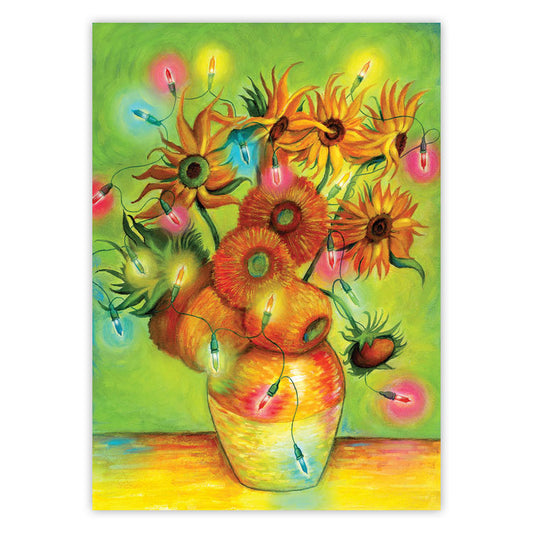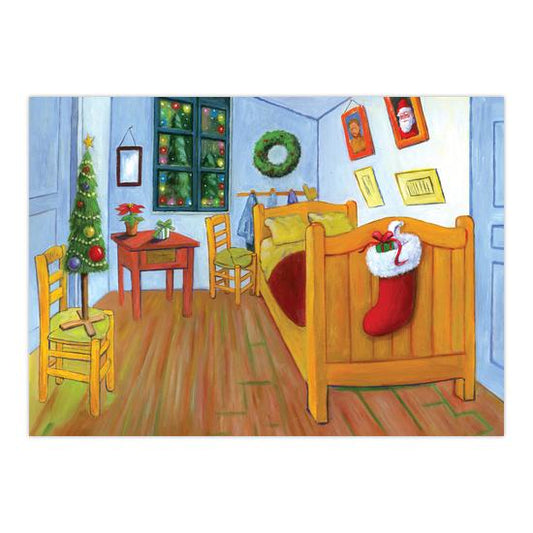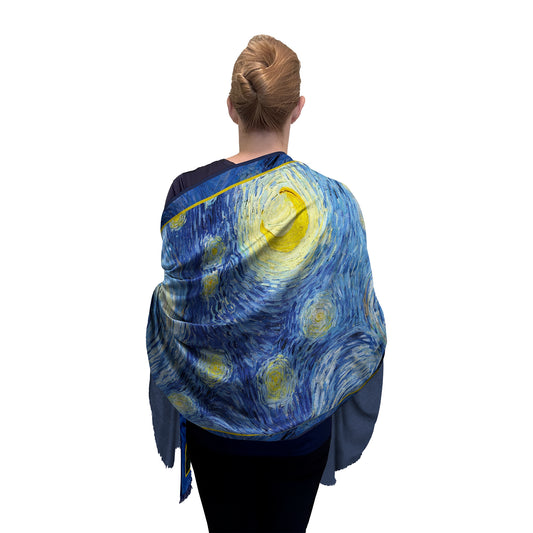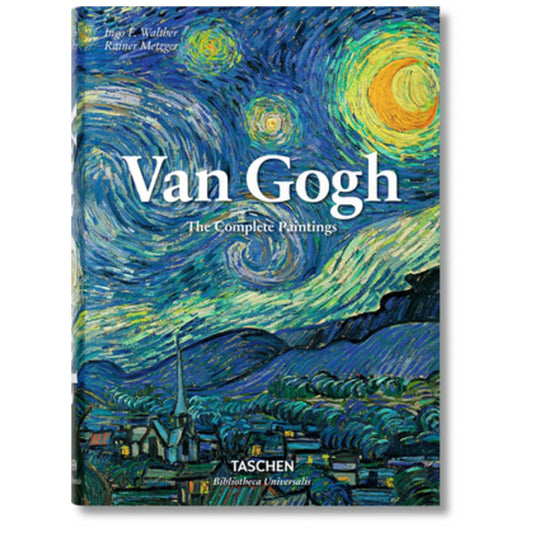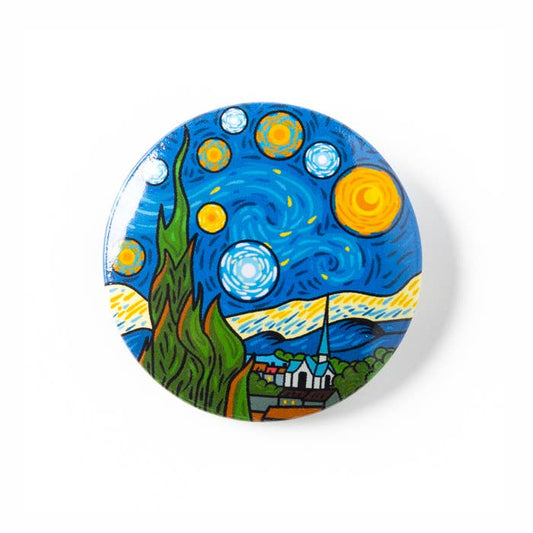Artist Series Quilling Card: "Sunflowers" by Vincent van Gogh
Artist Series Quilling Card: "Sunflowers" by Vincent van Gogh
Out of Stock
Couldn't load pickup availability
Sunflowers by Vincent van Gogh is the title of two series of still life paintings. This one in particular has become the most well-recognized from the second series with all paintings depicting sunflowers in vases. The second series of five canvases were created in Arles, south of France, between 1888 and 1889. Van Gogh intentionally used only three shades of yellow ‘and nothing else’ to depict the sunflowers which he thought communicated ‘gratitude’.
Quilling Cards' Artist Series artfully transforms paint strokes into paper strips using the ancient art of quilling. Each card takes several hours to make and reimagines a famous work of art into a magnificent greeting card that can either be sent and shared with loved ones or kept and framed as the work of art it is.
- Additional postage required when mailing
- Blank inside
- Color coordinated envelope included
- Suitable for framing
Product Details
Product Details
- Product type: Blank Note Card
- Shipping Dimensions: 7.0 × 5.5 × 0.125 inches (17.8 × 14.0 × 0.3 cm)
- Shipping Weight: 0.19 lb (3.0 oz; 85 g)
- SKU: SKU: SKU010008761
- UPC: 843425108926
- Part No.: AS0012
Share






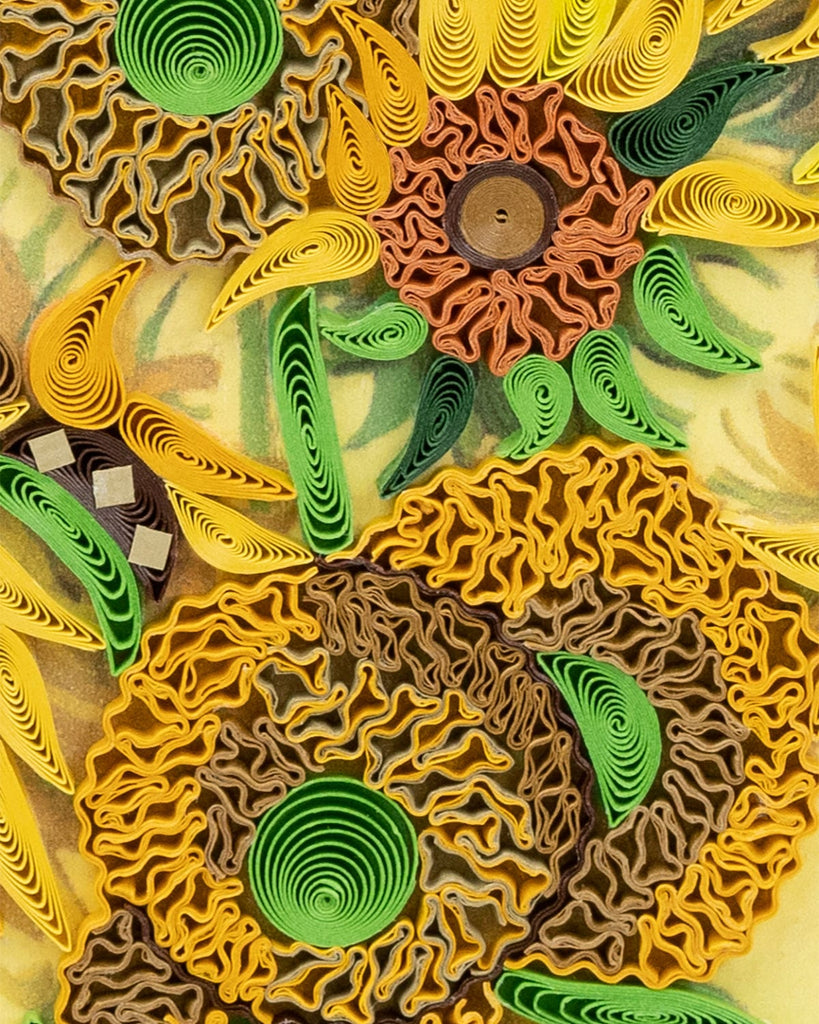
-
Quilled by Hand
Quilling, also known as paper filigree, is a paper art technique that involves shaping, rolling, and gluing strips of paper into decorative designs.
-
Social Enterprise
Social enterprises seek to maximize profits while maximizing benefits to society and the environment, and the profits are principally used to fund social programs.
-
Woman Owned Business
At least 51% of this business is owned and operated by women.
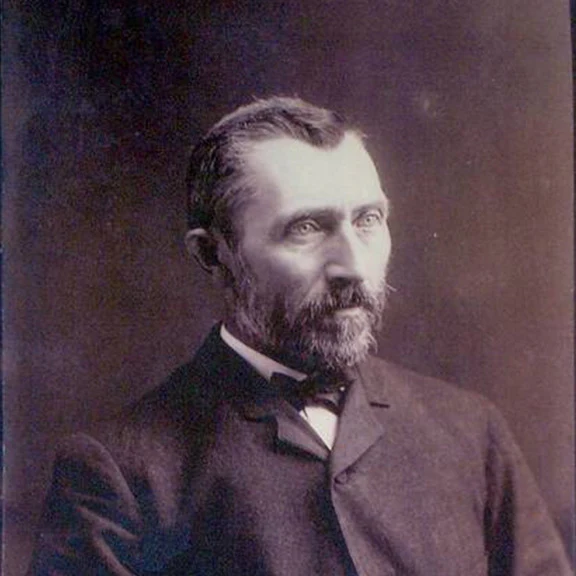
About the
Vincent van Gogh
Vincent van Gogh (1853 — 1890) was a Dutch post-impressionist painter who posthumously became one of the most famous and influential figures in the history of Western art. In a decade, he created about 2,100 artworks, including around 860 oil paintings, most of which date from the last two years of his life. They include landscapes, still lifes, portraits and self-portraits, and are characterized by bold colors and dramatic, impulsive and expressive brushwork that contributed to the foundations of modern art. He was not commercially successful, and his death at 37 came after years of mental illness, depression and poverty. Today, van Gogh is one of the most widely recognized and celebrated artists in the world.
More Vincent van Gogh
-
Sunflower Lights Holiday Cards
Regular price From $4.50 USDRegular priceUnit price / per -
Van Gogh Christmas Cards
Regular price From $4.50 USDRegular priceUnit price / per -
Fine Art Shawl/Scarf: van Gogh's Starry Night
Regular price $49.00 USDRegular priceUnit price / per -
Van Gogh Irises Folding Fabric Hand Fan
Regular price $13.95 USDRegular priceUnit price / per -
Van Gogh Sunflowers Folding Fabric Hand Fan
Regular price $13.95 USDRegular priceUnit price / per -
Van Gogh: The Complete Paintings
Regular price $25.00 USDRegular priceUnit price / per -
Earaser Rubber Ear Eraser
Regular price $6.00 USDRegular priceUnit price / per -
Art Button: van Gogh's "Starry Night"
Regular price $2.00 USDRegular priceUnit price / per -
Fine Art Shawl/Scarf: van Gogh's Almond Blossom
Regular price $49.00 USDRegular priceUnit price / per -
Van Gogh's Almond Blossom Folding Fabric Hand Fan
Regular price $13.95 USDRegular priceUnit price / per

About the Vendor
Quilling Card
Quilling is the art of rolled, shaped, and glued paper that results in creating a unified, decorative design. The name quilling is thought to come from the origin of the art; birds’ feathers, or quills, were used to coil the strips of paper around.
Since 2015, Quilling Card has been certified with the Fair Trade Federation. The organization focuses on maintaining a code of values for just treatment of employees. With the rapid expansion of the business, Quilling Card employs over 500 quillers in two locations, providing a stable and safe work environment, with healthcare and food benefits for its employees.
-
Made by Hand
Hand crafted with love.
-
Minority Business Enterprise
Certified Minority Business Enterprise. At least 51% of the business is owned and operated by Black American, Hispanic, Native American, Asian Pacific, or Subcontinent Asian people.
-
Woman Owned Business
At least 51% of this business is owned and operated by women.
-
Museum Store Association Member
The Museum Store Association supports the cultural non-profit retail industry and the people who work in it.
-
Certified Fair Trade
Certified Fair Trade by Fair Trade International.
More from Quilling Card
-
Shadowbox Frame
Regular price $22.00 USDRegular priceUnit price / per -
Quilled Royal Guard Note Card CLEARANCE
Regular price $6.00 USDRegular priceUnit price / per$12.00 USDSale price $6.00 USDSale -
Quilled Royal Guard Teddy Bear Note Card CLEARANCE
Regular price $6.00 USDRegular priceUnit price / per$12.00 USDSale price $6.00 USDSale -
Quilled Double Decker Bus Note Card CLEARANCE
Regular price $6.00 USDRegular priceUnit price / per$12.00 USDSale price $6.00 USDSale -
Quilled Red Telephone Box Note Card CLEARANCE
Regular price $6.00 USDRegular priceUnit price / per$12.00 USDSale price $6.00 USDSale -
Quilled Big Ben Note Card CLEARANCE
Regular price $6.00 USDRegular priceUnit price / per$12.00 USDSale price $6.00 USDSale -
Frame for Artist's Series Quilling Cards (Rectangle, Gold)
Regular price $40.00 USDRegular priceUnit price / per -
Frame for Artist's Series Quilling Cards (Square, Black)
Regular price $40.00 USDRegular priceUnit price / per -
Artist Series Quilling Card: "Woman with a Parasol" by Claude Monet
Regular price $30.00 USDRegular priceUnit price / per -
Artist Series Quilling Card: "Composition" by Piet Mondrian
Regular price $30.00 USDRegular priceUnit price / per








